No products in the cart.
Table of Contents
The art of bonsai has been around for centuries, and as a gardener, one cannot ignore it. It is an unusual hobby that can become addictive for good reason. Not only is it therapeutic, but it is very hypnotic to make you relaxed.
With some dedication, bonsai plants can grow indoors. You just have to choose the right tree species. So, if you decide to take this up as a hobby, Plantly has some great bonsai trees for beginners here.
Best Bonsai Trees For Beginners
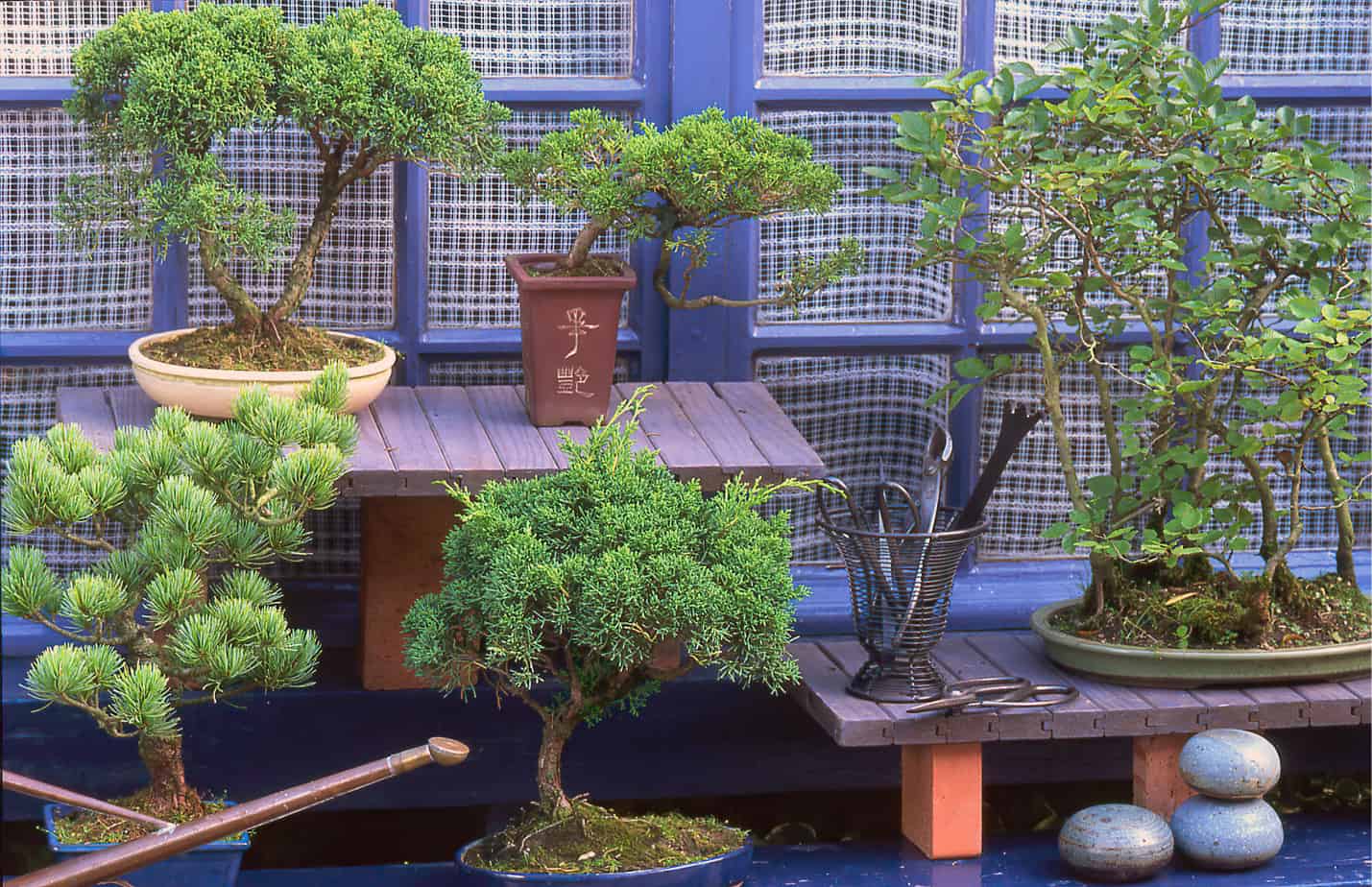
The following bonsai trees are worth trying as an affordable way to bring nature into your home, even if you’re a beginner. Each will require low maintenance while you create a style of your choice. Whether you want a traditional look or hardy trees for beginners looking less conventional, you will find one available here.
Chinese Elm Bonsai Tree

The Chinese elm bonsai tree is one spectacular but undemanding species. The tree is slow-growing but does need loads of direct sunlight. The Asian elm is very weather-tolerant in some climates. It is fantastic for beginners as it allows pruning practices year-round.
Bonsai hobbyists use the elm for practicing the art form. But the Chinese elms are the most popular of all the species. It makes for an exceptional choice, and it grows well indoors and outdoors. During winter, it helps to keep it inside.
One of the elm’s most notable features is the elegant texture look. The bonsai tree grows oval leaf clusters, and it has a naturally growing S-shaped trunk with a corked bark look.
As the tree grows, the bark chips away to reveal warm tones. As it grows slow, you can do loads of wiring training. It gives you enough time to practice your wire training on it. Suppose this is your dream bonsai tree.
Avoid placing it in a dark spot. During the summer, let it stand in bright indirect light without too much heat.
Juniper Bonsai Tree

For a sun-loving tree, the Juniper bonsai is perfect for any beginner to start with. The Juniper bonsai can quickly be grown outdoors. It is a traditional tree that is perfect for manicuring the needled foliage with little effort to mature.
The Juniper grows as a bush shrub with flexible branches, needle-tipped foliage, and a trunk in its natural habitat. But you can grow it in a container. The Juniper is an evergreen plant that loves the sunlight.
Hence, it is the best bonsai tree for beginners in an outdoor bonsai garden. You can leave it out all year long, but it helps to take protective measures in winter against the cold temperatures. When you train it in the early stages, you can mold them into different designs.
You can twist or bend the branches with your wiring skills. Another fantastic thing about these trees is that they can handle heavy-handed pruning. Yet, it helps to remember you need a sharp tool to groom this tree but do not trim it entirely.
The tree will not bud from bare branches unless you want specific limbs gone. But leave some foliage for growth.
Ficus Bonsai Tree
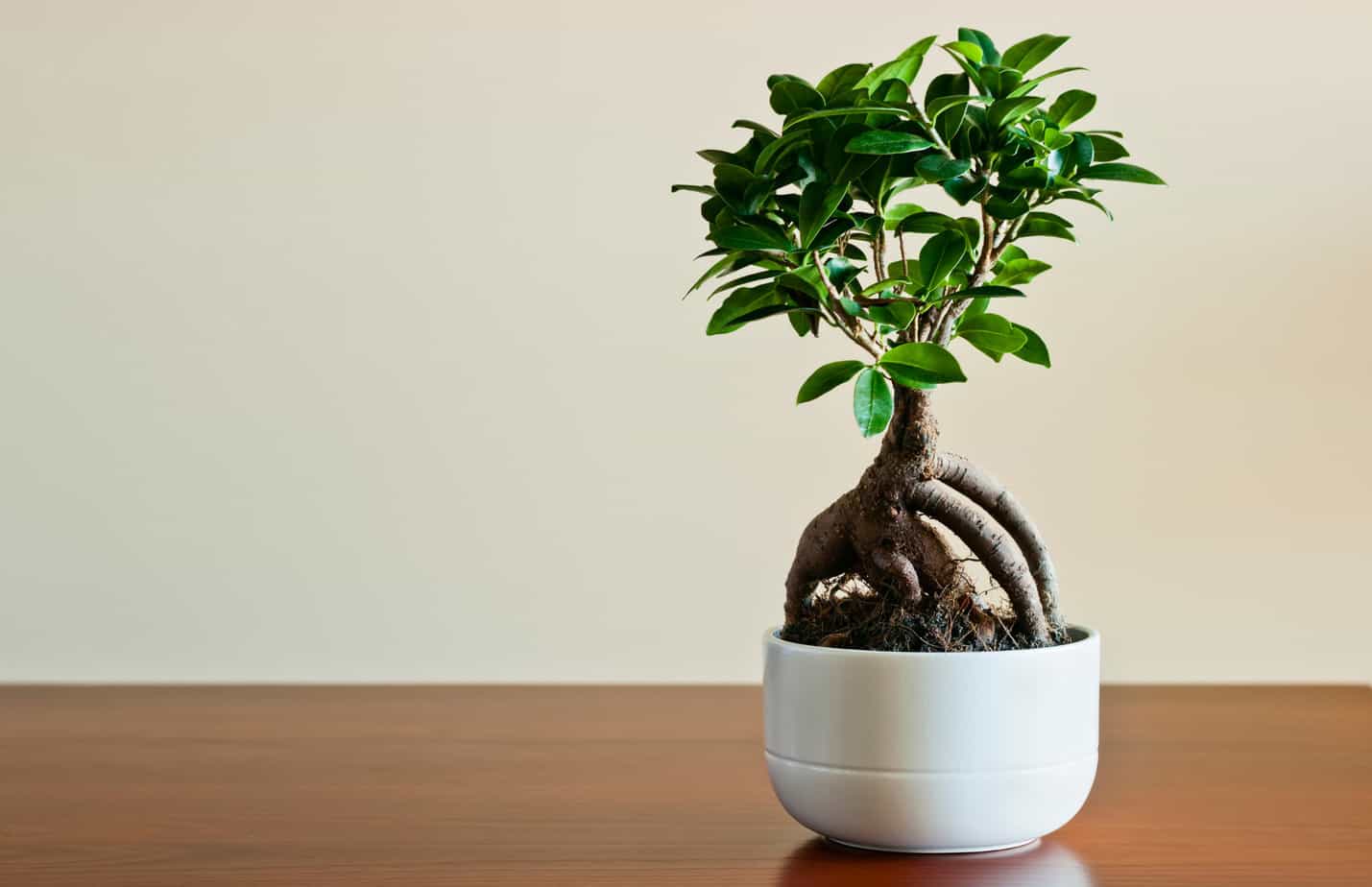
Another fantastic miniature form tree that is a go-to fig for novices is the Ficus bonsai. It is a low-maintenance plant with remarkable aerial roots and a thick banyan trunk that you can fuse with wire.
So, if you have zero experience as a bonsai gardener, the Ficus species is a great tree. Another common name for the plant is the Common Fig or Chinese Banyan. The tree matures fast with a thick woody trunk and has deep green pointed foliage.
The Ficus trees make for an ideal indoor bonsai tree as it needs not much pruning. It helps to keep the room temperature warm, and it will grow with full foliage without proper care. As bonsai beginners expect it to grow countless trunks you can wire to fuse for a robust look.
You can also use your bonsai tools to train the aerial roots to cover decorative rocks. Do you want your tree to grow a robust trunk? Then, we recommend leaving it to grow for a few years before pruning it.
For a thin trunk doing regular pruning helps to maintain the look.
Hawaiian Umbrella Bonsai Tree
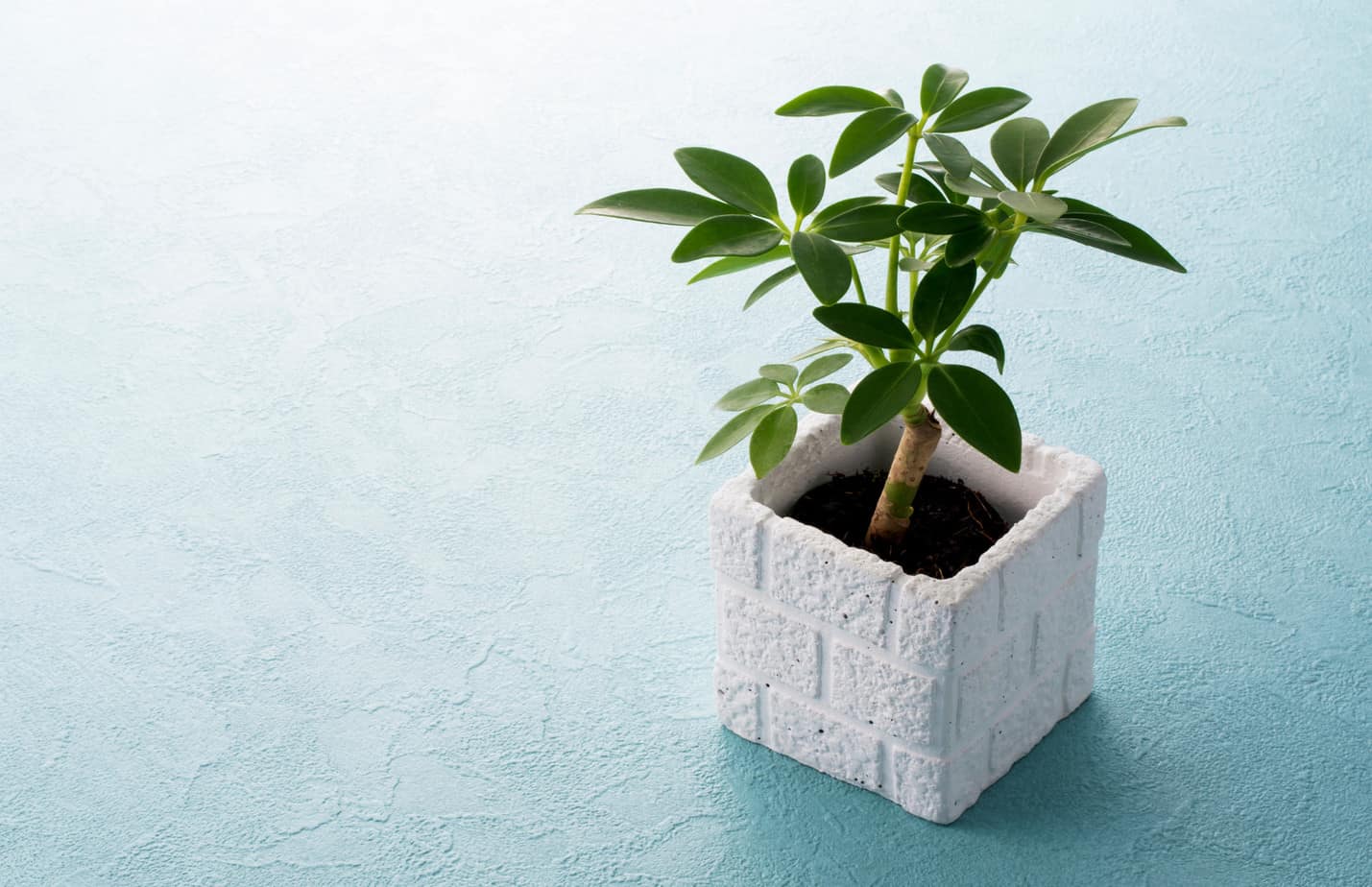
For fuss-free flowering evergreen indoor plants, the Hawaiian umbrella bonsai is perfect. The tree grows naturally with a domed crown, and the foliage is thick with fragile aerial roots. The bonsai trees are also known as the Dwarf Schefflera or Dwarf Umbrella.
The tree grows as a small shrub with evergreen leathery leaves in the wild. The bonsai gets its name from the umbrella-shaped foliage and thin stem. When the aerial root systems grow, it looks fantastic.
Once it grows flower clusters with berries in summer, it even looks more spectacular. While most trees are easy to shape, the Hawaiian umbrella tree is more complicated. But beginner bonsai tree lovers still love working with this plant.
The trunk’s very reactive to showing signs when overwatered to help you correct the mistake. We recommend keeping the soil moist and well aerated to help prevent root rot. We recommend re-potting your tree every two years.
Even the propagation with the Hawaiian umbrella trees is a breeze. So, you can use the seed or a cutting rooted in water or soil.
Jade Bonsai Trees

These woody succulents do not need frequent watering, and it has oval leaves. The glossy green leaves look fabulous and are a hardy sun-loving plant with a thick trunk. The trunk’s very responsive to pruning.
It is the best bonsai plant for beginners and is referred to as the Dwarf Jade bonsai, known as Portulacaria afra from South Africa. The miniature tree stores its water in the trunk. Yet, the glossy oval leaf clusters are the plant’s main attraction.
The succulent grows more branches when pruned to give it a whole bonsai look. The Baby Jade bonsai makes for a great indoor plant and is also forgiving if you forget to water it. We recommend spraying those dark green leaves once a month with a non-toxic pest repellent.
It also helps to keep the soil moist and not too dry as the repellent can burn the delicate roots. Doing this will help to keep spider mites and aphids under control.
Japanese Red Maple Bonsai Trees
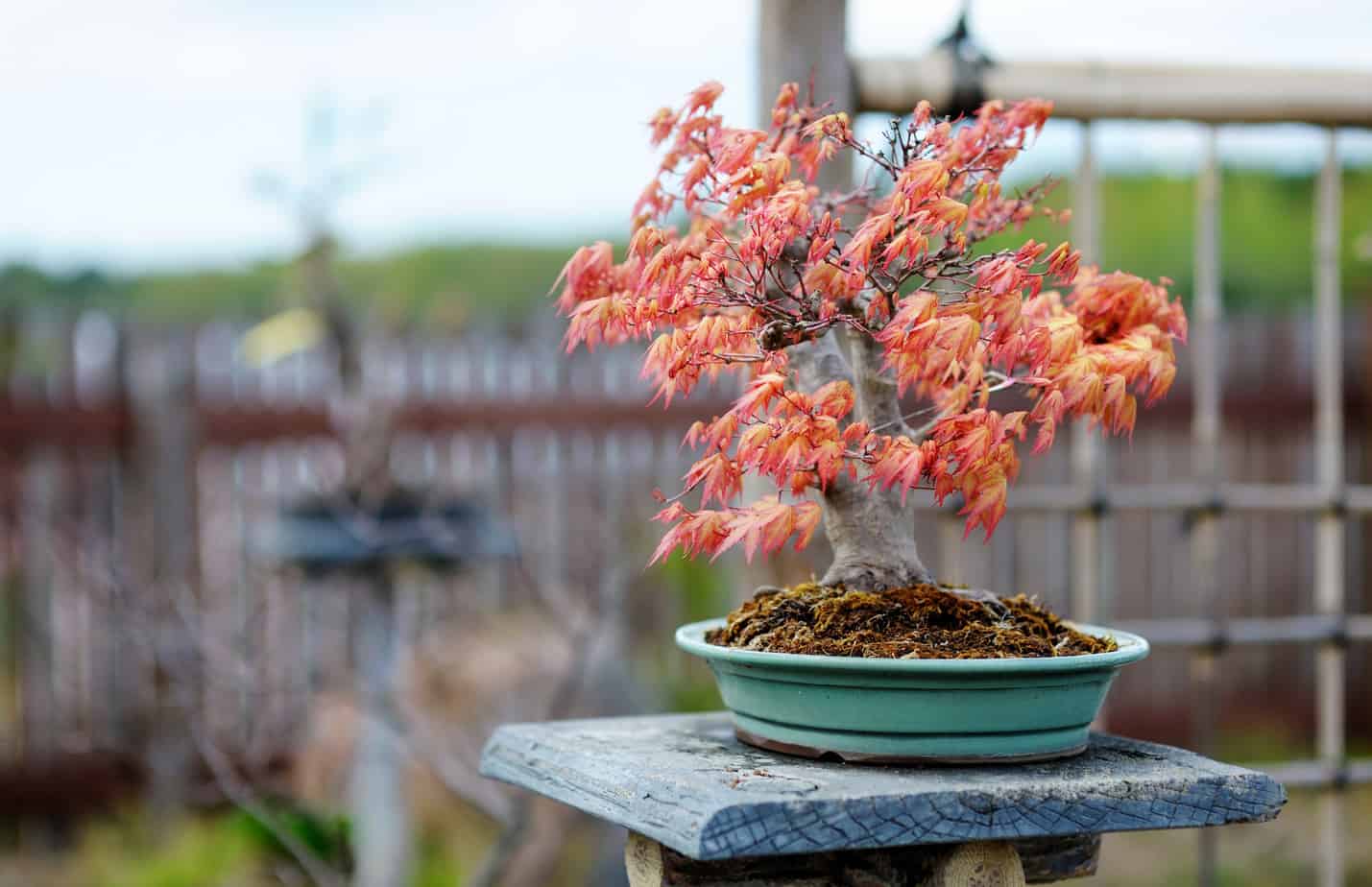
Bonsai growers will love this colorful ornamental tree. The bonsai tree has five-pointed leaves shifting form from green to red. The fact is that the leaves make the Japanese red maple bonsai a superstar to have in the garden or home.
The leaves change from green, yellow, and orange to red as the seasons change. The Japanese maple is a deciduous tree, and in spring, they bloom blower clusters. It is also an easy-to-grow bonsai tree for beginners.
When you provide it with a windy spot, direct sunlight, and water, it is a happy tree. It can also survive a bit of overwatering when young. Another fantastic thing that bonsai enthusiasts will love is that it is frost tolerant to keep them as an outdoor plant.
Yet, the best place is in a shaded spot when the temperatures go below freezing point. Another impressive thing about this potted tree is that it does not need wire training. The tree grows a unique trunk naturally.
What the tree will provide is improving your pruning technique. We recommend keeping the soil damp, and older trees only need re-potting every two years while younger ones every alternative year during spring.
Norfolk Island Pine Bonsai Tree
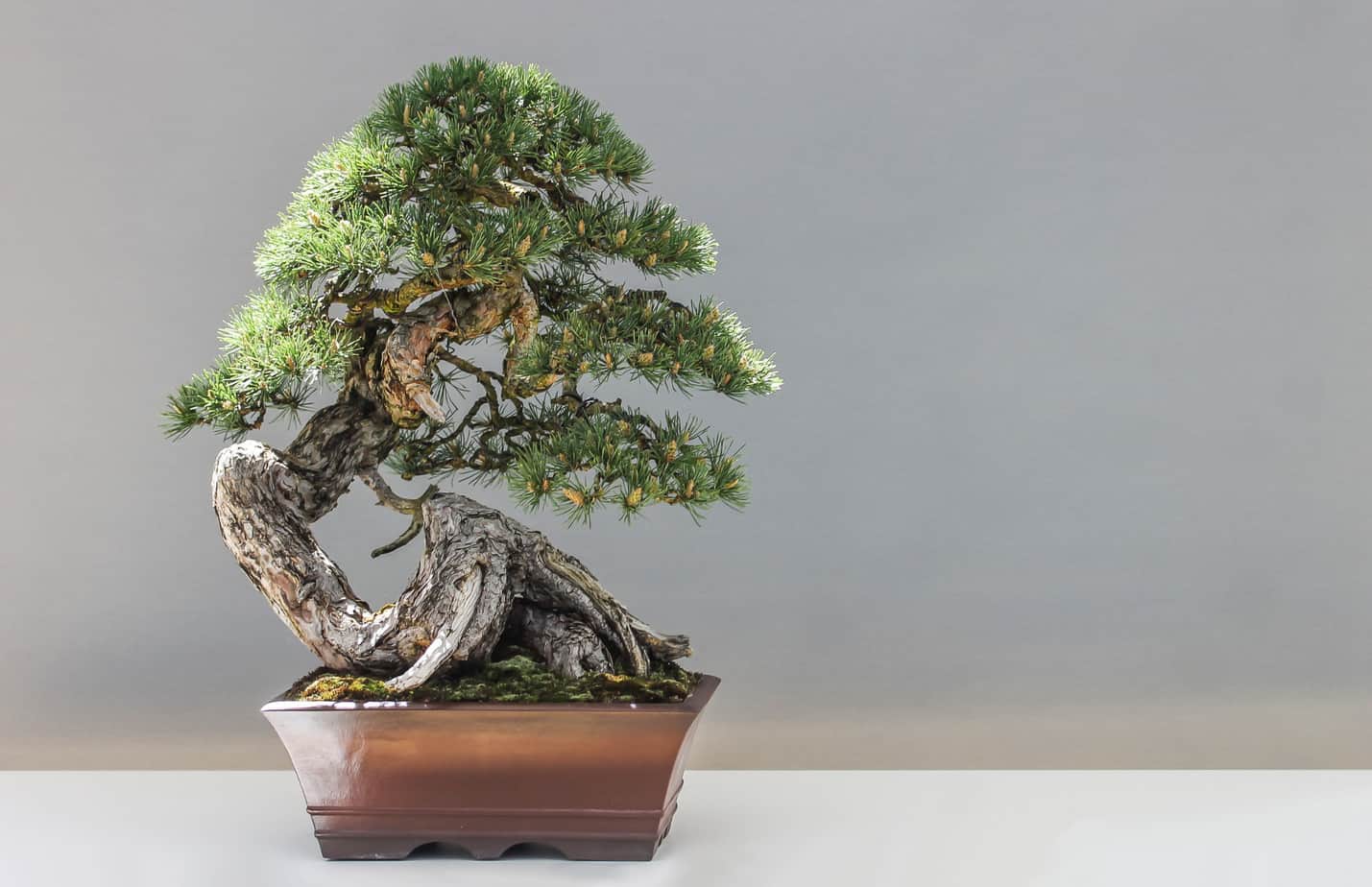
The Norfolk Island pine trees you find between Australia and New Zealand. It is one of the easiest bonsai trees for beginners to care for. The bonsai prefers bright sunlight and warmth.
The indoor bonsai has a slow growth of up to six inches per year and is easy to maintain. When you keep up with trimming and re-potting, you can keep it in a small form.
The bonsai is an evergreen that thrives in bright light and only needs watering sparingly.
Flowering Ligustrum Bonsai Tree

Looking for more beginner bonsai trees, then look no further than the flowering Ligustrum. The plant belongs to the Privet family with glossy leaves. In its natural environment, it grows up to 30 feet tall.
The bonsai trees are beautiful in spring, with their white blossom producing blueish berries in fall. Bonsai gardeners will find this plant hardy. Yet, it is an invasive species in some parts of Northern America.
But as it is grown indoors, there should be no problem keeping this bonsai tree maintained. You can keep your bonsai plant in bright light to partial shade in well-draining soil. The evergreen bonsai require regular watering.
Ponytail Palm Bonsai Trees

The Ponytail Palm comes from North Central America and Mexico, thriving in different lighting conditions and soil. The trees have green leaves with an elongated shape. The foliage tends to curl at the tips giving it an attractive shape.
Another exciting name this bonsai tree has is the elephant’s foot, as it has a wide base looking like an elephant’s foot. The bark has a rough texture and is wrinkled like the animal’s skin.
If this is your first bonsai, you will find taking care of it a breeze and does not need frequent watering. While it thrives in bright sunlight, it can also tolerate low-light environments. It prefers the soil dry but needs good drainage.
Dracaena marginata Bonsai Trees

Yes, the Madagascar Dragon tree is a perfect first bonsai tree. It has elongated yet pointy leaves to give your living space a tropical feeling. The foliage has a delicate white or red edging with a long thin trunk.
When you train the tree’s trunk, they look great in a grouping with other bonsai trees. The plant can reach up to six feet tall if you grow it as a houseplant. It responds well when you cut branches and give them good trimming.
The trees prefer bright light with dry soil in between watering.
Whether you want to buy, sell or simply reach out to other plant enthusiasts, Plantly is the right place to be!


